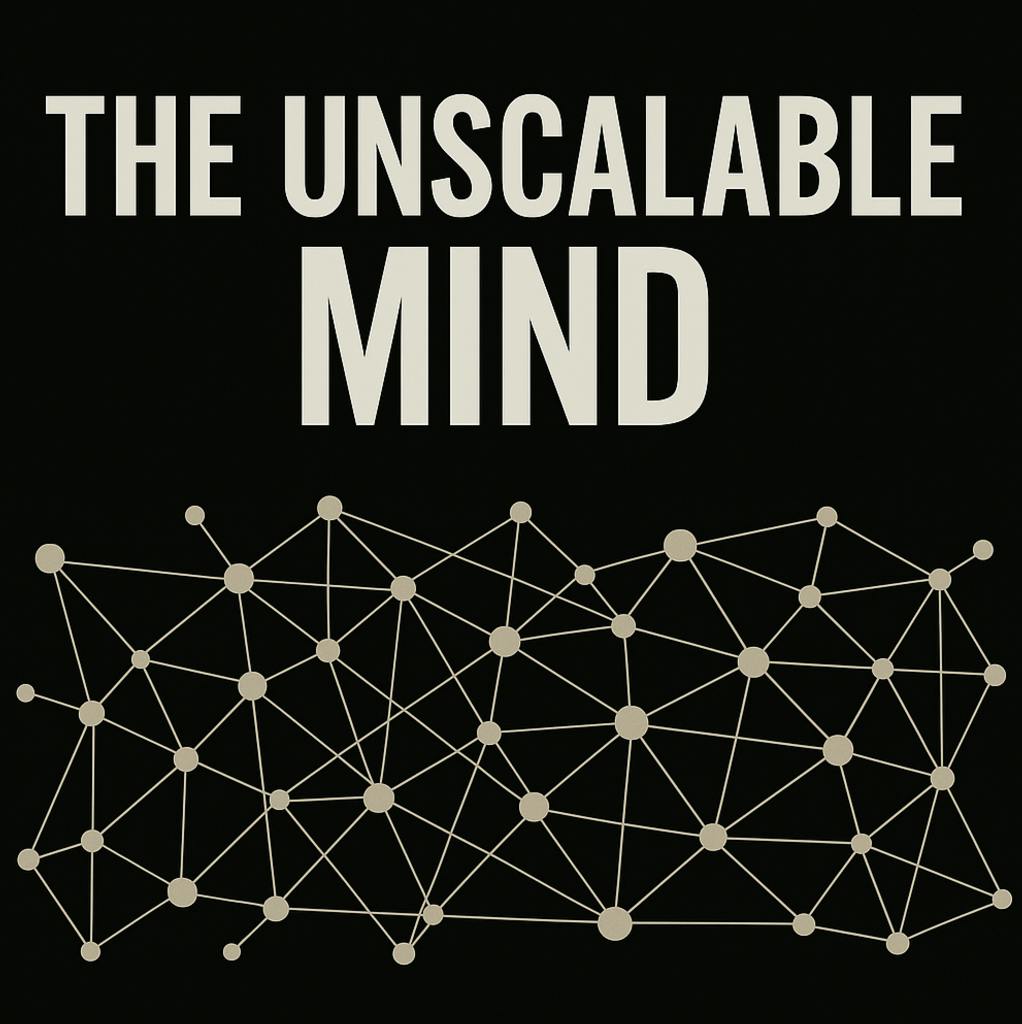The modern tech stack isn’t dysfunctional.
It’s highly functional — at suppressing a specific kind of mind. Not the underperformer. Not the amateur. But the one who sees through it.
The system doesn’t fail to reward brilliance. It intentionally penalizes uncontainable intelligence: The kind of intelligence that’s recursive, systemic, deeply causal, structurally non-compliant — and unable to participate in incoherent systems without first reorganizing them. If you think like this — if you recognize yourself in what follows — you were never supposed to succeed in the current system. Because the system wasn’t built for you. It was built to route around you.
- System Thinkers: You don’t just code features. You map flows, lifecycles, dependencies. You treat a bug not as a symptom but a systemic pattern leak. You refuse to solve subproblems in isolation.
- Recursive Analysts: You think in feedback loops. You rewrite models mid-process. You’re not interested in solving the problem — you’re interested in reshaping the problem-space itself.
- Abstraction Seekers: You see repeated logic and collapse it. You hate boilerplate. You crave clean interfaces, minimum moving parts. You don’t memorize patterns — you extract invariants.
- High-Agency Actors: You don’t wait for permission. You spot leverage. You restructure workflows. You walk away if systems don’t deserve your effort. You’re not rebellious — you’re simply uncorralable.
- Causal Reasoners: You don’t care what “everyone does.” You want to know why they do it, what incentive made them do it, and what contradiction it hides. You are immune to cargo cults.
- Cognitively Independent: You don’t absorb systems. You interrogate them. You don’t mimic successful behavior. You question whether the success is real.
Why the System Filters You Out (By Design)
Companies aren’t trying to identify brilliance. They’re optimizing for predictability, alignment, and throughput. To do that, they must minimize variance, flatten decision-making. They must delegate without overhead, and hire at scale without dependence on judgment.
So what do they optimize?
LeetCode: Ritualized Submission Disguised as Merit
LeetCode is marketed as a meritocratic filter — a way to surface the best minds through standardized technical challenges. But in practice, it is a system that rewards submission to artificial constraint.
For the system thinker, LeetCode presents two core contradictions: It simulates problem-solving without real-world context. It rewards speed under pressure over clarity under ambiguity.
You probably have already seen through this, and know that real engineering is not about racing through permutations of trees in 30 minutes. It’s about managing tradeoffs, designing across failure domains, and balancing time, complexity, and impact.
But have you wondered what the real incentive behind LeetCode is, assuming it is not a failure at recruitment, but doing exactly what it’s designed to do?
It selects for engineers who can train themselves to succeed inside arbitrary constraints — without questioning them. In other words: LeetCode really tests your adaptability to systems that make no sense. Those who pass are less likely to resist incoherent specs, irrational deadlines, or vacuous rituals — because they’ve already proven they can grind through them. For recursive minds who seek structure behind structure, LeetCode is alien. It’s noise — not signal. And that’s exactly what makes it effective as a gatekeeping mechanism against systems-level thinkers.
Go: The Intentional Erasure of Expressiveness
Go is not just a programming language. It is a philosophy of engineering designed around a very specific organizational need: safe, uniform output from large teams of interchangeable engineers.
Go is famous for rejecting complexity — but complexity is not the enemy of thought. Unnecessary complexity is. What Go removes is not noise — it removes expressive leverage: It discouraged generics for a decade not because it was impossible — but because it would allow nonstandard abstraction. It removes metaprogramming and macro facilities that allow pattern collapse. It relies on boilerplate repetition instead of structural generalization.
For a system thinker, these limitations are not just inconvenient. They’re epistemologically offensive, and intellectually oppressive.
System thinkers don’t write code linearly — they design from concept down to implementation. They look for hidden structures, repeating patterns, and abstractions that encode thought once, correctly. Go doesn’t allow that. Go forces you to repeat yourself until everyone can read your mind without learning how you think.
The real incentive behind Go, lies in flattening the distribution of engineering output. Making codebases legible to managers and junior engineers without context, and ensuring no one engineer becomes a point of architectural leverage. Go treats intellectual depth as a maintenance risk. So it encodes compliance directly into the language. You cannot express your full mind.
That’s not a limitation — it’s the goal.
React: Fragmentation as Organizational Control
React solved a genuine problem — UI state and reactivity — but its adoption pattern reveals something deeper: It aligns perfectly with the organizational desire to decompose cognition into ticketable fragments.
React’s component model is seductive: Break everything into small reusable pieces. Prop-drill and compose until the UI renders. Add hooks, contexts, portals — abstract all flow into 10-liner microstates.
But from a systems perspective, React isn’t UI engineering — it’s cognitive disintegration.
You no longer own flows, nor understand user journeys. You see cross-screen state transitions and think in terms of coherence. You think in <Card />, <Decks />, and a dozen invisible context providers routing stale props through five layers of indirection. Anyone who wants to build systems (state management, rendering efficiency, UX flow) gets buried under 200 files named CardContainer.tsx. The real incentive behind React, lies in decomposing engineering work so it can be distributed across teams without requiring architectural ownership. It makes hiring easier by turning front-end development into UI assembly, this eliminating the need for holistic design thinking. React isn’t popular because it empowers engineers. It’s popular because it lets companies hire 50 people to build 500 components without any of them needing to understand the system.
It makes true system thinkers irrelevant. And to the system, that’s not a feature like they wished — it’s a bug.
The Modern Stack: Scalable, Yes — But Also Controllable
React, Go, and LeetCode are only the most visible mechanisms in a broader architecture of suppression. Linter rules and opinionated formatters like Prettier or ESLint encode arbitrary style mandates into tooling — not to improve correctness, but to enforce uniformity and eliminate expressive variance. Scrum rituals and Agile ceremonies fragment work into abstractions of progress — story points, sprint velocity, Jira tickets — converting strategy into measurable compliance theater. Even “move fast” culture and tech debt shaming are not about iteration; they’re about suppressing dissent: anyone who pushes for deeper design is labeled a blocker.
AI mandates take this even further, shifting evaluation away from judgment and insight toward how efficiently you align with tooling. The modern stack isn’t just built to scale systems — it’s built to scale obedience, and to quietly filter out any mind that insists on understanding the whole.
None of these are accidents. They are architectural choices that reflect what tech companies value:
Alignment over truth. Compliance over elegance. Subtask completion over holistic design. Legibility over leverage.
Because to the average tech org, judgment is a liability. If one person has too much insight, they might challenge the roadmap; they might reject the ticket scope; they might change the system. But changing the system takes time. Insight isn’t linear. Brilliance isn’t measurable. So the system is designed to prevent it before it starts.
What It Feels Like if You’re This Kind of Mind
You feel underutilized — not because you lack skill, but because the system lacks depth. You feel exhausted — not by the work, but by the low leverage of everything you’re allowed to do. You feel detached — because the tools fight your thinking style at every turn. You feel silenced — not by anyone directly, but by a structure that absorbs insight like noise. And eventually, you ask: “Is it me?”
No. It’s not you. It’s the design — and you weren’t part of the requirements.
The Way Forward
If this describes you, the only rational path is strategic. You can learn the system well enough to navigate it. Leverage it when it suits you, resist internalizing it when it doesn’t. Avoid environments where you’re structurally disarmed. Or, step outside entirely — and design something better.
But above all: don’t let a scaled system’s resistance to thought convince you that thinking is wrong. You were never too much. You were just never intended to be scalable.









